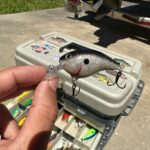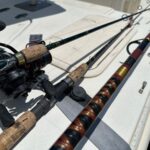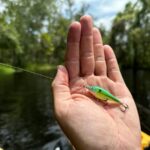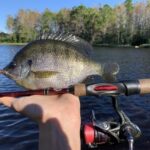If you are new to fly fishing and you’re trying to understand some of the basics…you’ve probably asked yourself what are the different types of fly lines?
In this article, I’ll easily explain the different types of fly lines and their most common uses.
Table of Contents
What Are The Main Types Of Fly Fishing Line?
Fly fishing lines can be separated into three main categories: Floating line, sinking line, and sinking tip line. Each type of line has its own unique characteristics for different fishing applications.
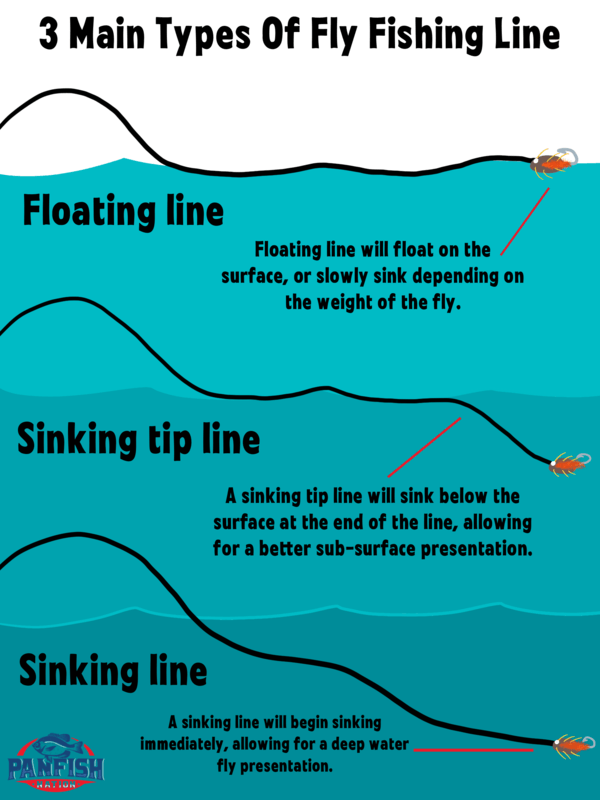
Floating Line
Floating line is by far the most popular fly line and it does what it sounds like, it floats on top of the water.
Floating line gives the angler the ability to fish dry flies on the surface but also the ability to fish a streamer below the water, by simply adding more weight to the fly or allowing the fly to sink longer before stripping.
With floating line, you are able to fish almost all ranges of the water column by simply varying your technique or approach and that versatility is what makes it so popular.
Full Sinking Line
Sinking line is designed to do the opposite of floating line and get your fly down quicker.
A sinking line can be extremely effective when fishing from a boat, in fast water, or when you simply just need to get your fly down quickly.
Sinking line is ideal for fishing streamers when you want to get your fly down deep into the middle or bottom of the water column.
Different Types of Sinking Lines
There are a few different types of sinking lines but the most used are full sinking lines and sink tip lines.
Sink Tip Line vs Full Sink Line
The main difference between a Full sinking line and sink tip line is the fact that a sink tip line is simply a floating line with a sinking fly line tip.
With a full sink line, the whole line sinks, while with a sink tip line only the tip sinks.
Sink tip fly lines come in a variety of different weights and sizes allowing the angler to decide how fast he wants his line to sink as well as how long he wants the sinking portion to be.
When I am fly fishing for crappie, I use a sink tip line. This allows my fly to slowly sink below the surface so I can determine where the crappie are staging. In my local lakes, this is anywhere between 4 and 8 feet deep.
Sink tip fly lines are great for wade fishermen as the floating section of the line makes it so the line does not get caught up in the rocks while you are wading like a regular full sink line does.
When fishing a sink tip line the fly will hover in the feeding zone while you strip it in, however with a full sink line once you get your fly into the strike zone it spends its whole time there.
How To Choose The Right Fly Line
The most important factor in choosing the right fly line is determining what kind of fishing you will be doing.
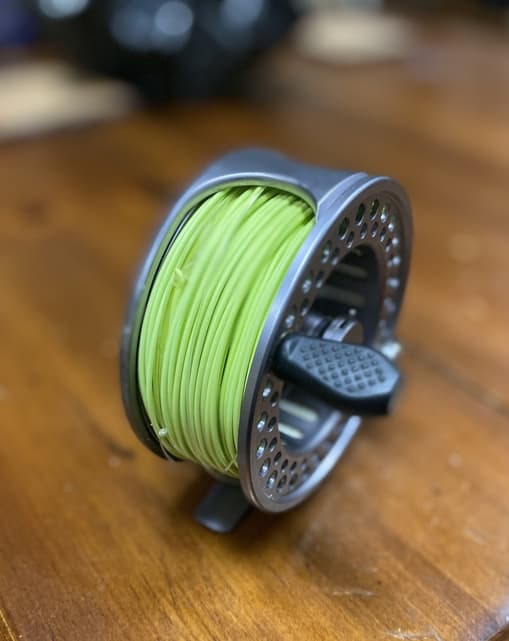
For example, if you just bought a brand new streamer rod then you will want to pair that up with a sinking line.
If you are planning on throwing dry flies and nymphing for trout, get a floating line.
If you are just starting out, I would recommend getting a floating line as it is the most versatile, and by simply varying your approach or fly slightly you can still be extremely effective on the water and fish almost all presentations (surface, sub-surface and deep).
Many fly fishing companies sell fly fishing combos that are great for beginners because they come pre-spooled with the right size and type of fishing.
This takes the guesswork out of choosing a fly line and allows you to start fishing and practicing right away (which is the fun part!).
Determine Your Price Point
Now that you have determined what classification of fly line you want it is important to determine your price.
With thousands of options available, determining your price point could cut your options down tremendously.
However, with this being said, I would keep in mind that fly line quality does matter, and it is best to put the money in to get a nice line now, then have to get another one a few months down the road.
Do Research, Ask Around!
Every fly rod, and fly line all cast a little differently from person to person.
Once you have determined the fly line you like based on your set price point and the weight of your rod, next is to do some research on them.
Since every person casts differently and prefers a different feel with their fly line, it is important to experiment with what you like.
Reading reviews or watching videos online of people’s thoughts can be a great way to better gauge what fly line would be best suited for you.
Closing Thoughts
I remember when I first started out fly fishing, I was a bit overwhelmed when I walked into Basspro shops and saw the dozens of fly lines, styles, tapers, weights, and colors…
The truth is, fly fishing is all about getting comfortable with your gear and presenting your fly to the fish in the strike zone.
Don’t worry too much about brands, styles, or colors…instead, choose a fly line that is best suited for your type of fishing, and within your price range.
And have fun!
You May Also Like: 11 Amazing Flies For Catching Smallmouth Bass
Like this post? Save it on Pinterest.

If you haven’t guessed yet, I love fishing and everything about it!
To learn more about why I started Panfish Nation, visit the About page and follow along on Social Media:


Download a copy of my FREE Lure Color Selection Chart & Knot Guide!
Stay up to date with fishing reports, tackle reviews, industry news, and much more! We respect your privacy, unsubscribe at any time.
Related Posts
- What Size Hooks for Smallmouth Bass? Quick Guide
- Large and in Charge-Mouth: 10 of the Best Bass Lures of All Time (And Where to Buy Them)
- The Seven Best Lures for Fall Bass Fishing
- Which Fishing Line is Best for Bass Fishing With A Spinning Reel?
- What Size Hooks for Panfish?
- What Is The Best Fishing Line For Bluegill?



